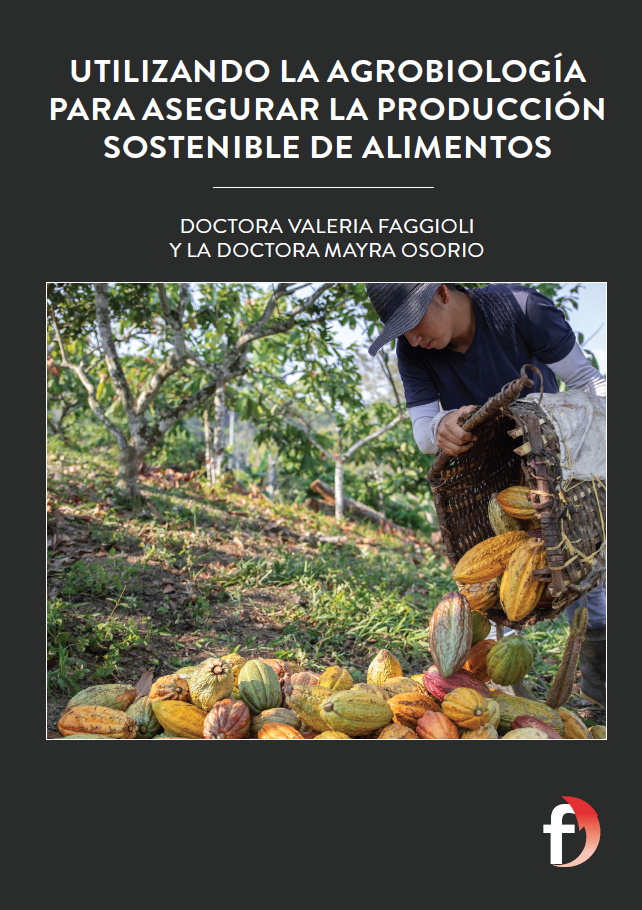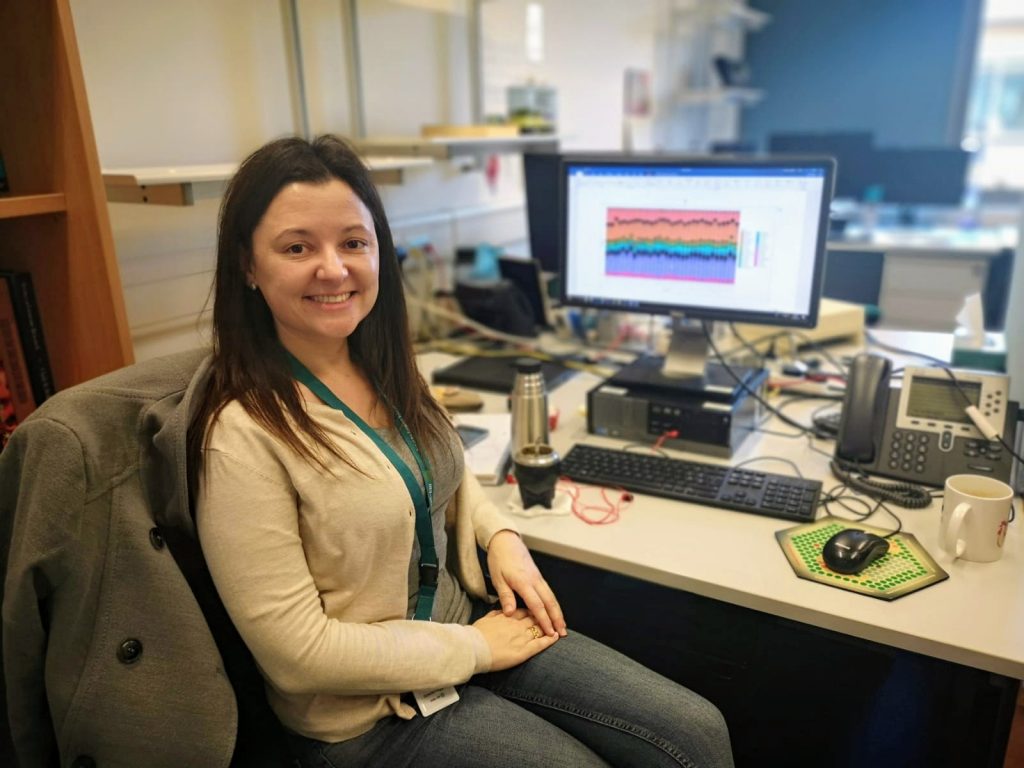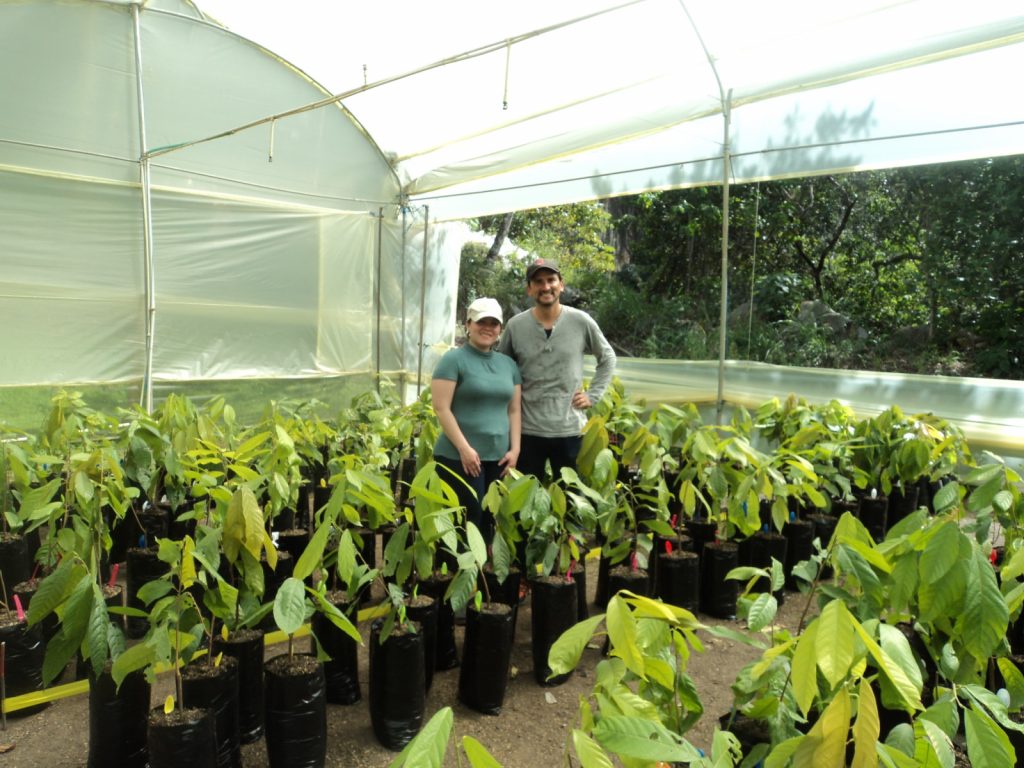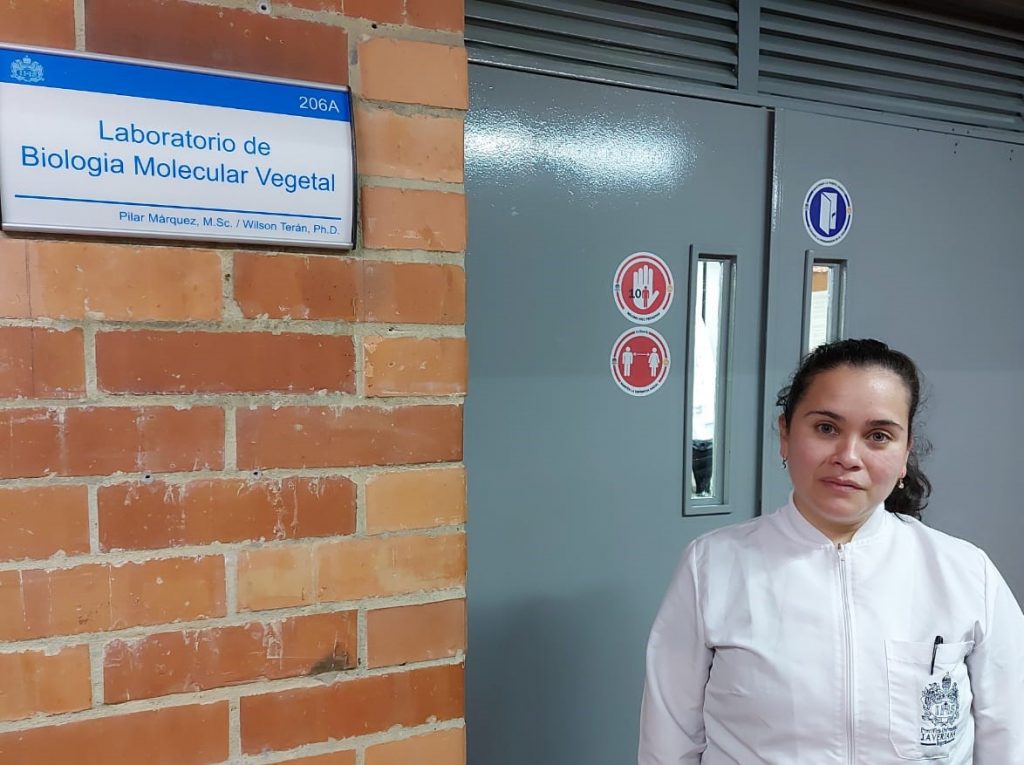Using agrobiology to ensure sustainable food production
Dr Valeria Faggioli and Dr Mayra Osorio are working on separate projects under the sustainable food production branch of the CABANA programme, which aims to accelerate the implementation of data-driven biology to overcome a range of environmental challenges in Latin America
TALK LIKE AN AGROBIOLOGIST
AGROECOSYSTEM – a functioning unit of agricultural activity
ANTHROPOGENIC – of, relating to, or resulting from the influence of human beings on nature. For example, anthropogenic pollutants
BIOINFORMATICS – a subdiscipline of biology and computer science concerned with the acquisition, storage, analysis and dissemination of biological data
CARBON SEQUESTRATION – the process of capturing and storing atmospheric carbon dioxide
ENERGY METABOLISM – all the chemical processes that go inside an organism to generate energy
GENOTYPE – an organism’s complete set of genetic material
METAGENOMICS – the study of a collection of genetic material (genomes) from a mixed community of organisms
MGNIFY – a free resource for the analysis and comparison of metagenomic data
PHENOTYPE – the observable physical properties of an organism
PHOTOSYNTHESIS – the process by which plants turn sunlight into chemical energy
PHYSIOLOGICAL – relating to the functions and mechanisms of a living organism
SOIL MICROBIOME – the dynamic community of microorganisms associated with plants and soil
STOMATA – pores found in the leaves, stem and organs of a plant
STOMATAL CONDUCTANCE – a measure of a plant’s stomata opening and closing (and hence, water loss)
TILLAGE – the agricultural preparation of soil by mechanical agitation of various types, such as digging, stirring, and overturning
TRANSPIRATION – loss of water vapour through the stomata
TRANSCRIPTOMICS – the study of the complete set of RNA transcripts produced by the genome – under specific circumstances or in a specific cell – using high-throughput methods such as RNA sequencing (RNAseq)
Whether through the direct effect of human activity, such as deforestation and mass crop production, or the indirect impacts caused by climate change, such as droughts and floods, the natural world is under a huge amount of pressure unlike ever before. To ensure our planet continues to provide for us, researchers the world over are investigating ways to make the way we live more sustainable. How we get our food is a huge part of this.
With this in mind, CABANA (Capacity Building for Bioinformatics in Latin America) is an exciting initiative strengthening the field of bioinformatics in Latin America. The programme is an international consortium of organisations – one in the UK and nine in Latin America – and targets three specific challenges: communicable disease, protection of biodiversity and sustainable food production. Dr Valeria Faggioli, of the National Institute of Agriculture Technologies in Argentina, and Dr Mayra Osorio, of the Pontificia Universidad Javeriana in Colombia, have worked on research projects under CABANA’s sustainable food branch.
SUSTAINABLE SOILS
Valeria is investigating the impact of long-term anthropogenic practices, such as intensive farming, on soil bacterial and fungal communities. Human activities that may be considered necessary for society – from planting certain plant species to constructing buildings – impact soil microbiomes and can affect the condition of the soil. They also have potentially devastating effects on food production, now and in the future.
Valeria is also investigating the long-term impact of human activities on soil microbiomes, with a view to demonstrating the need to change local and national practices to ensure sustainable food supplies. By studying soil samples, she hopes to show how human alteration of soil microbiomes can be sustainable if the modification is done thoughtfully and strategically, following procedures that consider the importance of ecosystem conservation.
A UNIQUE STUDY
The soil samples Valeria has studied were taken from the oldest experiment of soybean monoculture in the world. “The experiment was initiated in 1975 and includes a sustainable technique for cropping soybean, which includes the no-tillage method. This is now widely used in Argentina and other countries, but was novel at the beginning of the experiment,” she explains. “Planting without ploughing is crucial to preserve soil and accumulate organic matter contributing to reduced carbon dioxide emission to the atmosphere. The microbiome inhabiting such conditions represents a valuable resource to improve carbon sequestration in agricultural soils.”
METHODS
Supported by CABANA, Valeria spent several months in Rob Finn’s lab at the EMBL-European Bioinformatics Institute. There, she used a bioinformatics tool that classifies fungi and bacteria from DNA sequencing reads. She also used MGnify, a bioinformatics service run by the institute, which allowed for a complete analysis of the data and a precise identification of microorganisms in her unique set of soil samples. The main advantage of MGnify is that it allows researchers like Valeria to publish their own data in a way that can be used by other scientists and to visualise and analyse their data alongside similar datasets from investigations around the globe.
THE IMPACTS
Valeria’s research has generated information about the composition of microbial communities under different cropping practices in a specific location over a long period. It showed that no-tillage systems supported a more diverse soil microbiome and, ultimately, higher crop yields. “As soybean cultivation is spreading around the world because of its nutritional (mainly protein) value, the consequences on soil microbiomes can be extrapolated to other agroecosystems,” she says. “For instance, in South Africa, the crop has been recently adopted by farmers and we can share information about the consequences in terms of soil biological properties.”
THE NEXT STEPS
As Valeria’s research has shown, it is possible to identify thousands of species in a single gram of soil, so the next step is to establish the functional role of the identified species. So far, her findings have been presented in virtual seminars – nationally and internationally – for the scientific community and the farmers who will utilise the findings in the future.
SUSTAINABLE PLANTS
Mayra’s research aimed to characterise and compare the responses of two varieties of cocoa (Cacao) plant to water deficit. How do the genetic differences between these Cacao varieties affect their reactions to drought? Can this information be used to develop more drought-resistant varieties of Cacao?
Cacao cultivation is suffering from changes in rainfall because of global warming. The availability of water has reduced and there have been significant losses in yield, and the situation is expected to worsen.
INVESTIGATIONS
A typical day in the field sees Mayra getting up before dawn to collect physiological data, like hydric potential, which is indicative of the water status of a plant. “The rest of the day involves the observation of the plants and collecting data related to photosynthesis, stomatal conductance, and transpiration, through which it is possible to analyse the effect of drought on plant fitness,” explains Mayra. “For all these data measurements, I use special equipment, some of which is very heavy, and with little or no lighting. I register data in my field experiment notebook or directly on the computer.”
METHODS
Mayra also uses RNA sequencing (RNAseq) to find out which genes were expressed in samples from her Cacao plants. These patterns of gene expression can indicate which biological pathways are affected by the plant’s response to water shortage. The team Mayra works with uses statistical methods to help answer the biological question being addressed. “I expected that the Cacao genotypes would respond differentially to severe water deficit stress,” she says. “There were several approaches. For example, for the physiological data, we used an analysis of variance (ANOVA), followed by a mean comparison. In the case of RNAseq data analysis, the amount of data is so big and noisy that several analytical steps are needed, connected sequentially into a complex bioinformatic pipeline. This involves data filtering and transformation, statistical testing and graphical representations of analysed data, using several software, tools and databases developed by computer scientists or bioinformaticians.” Mayra conducted this part of her study at the EMBL-EBI, spending several months in the Gene Expression Team led by Dr Irene Papatheodorou, with the support of CABANA.
THE FINDINGS
The Cacao clones evaluated showed different levels of tolerance to drought; to a certain degree, they were all able to recover from a severe drought after rehydration. However, Mayra did find differences between the genotypes. “The most tolerant seemed to respond more to the specific type of stress imposed while maintaining a certain level of photosynthetic rate. The less tolerant clone response was seemingly broader, involving important changes in energy metabolism and photosynthesis,” she explains.
THE IMPACTS
Mayra’s research provides new insight into the genes involved in the tolerance of Cacao plants to stress caused by drought, which, until now, has been unclear. “Our results are relevant for seedling establishment in the field. For example, the high susceptibility to dehydration of young trees is something growers need to be aware of,” she says. “Differences found in efficient tolerance mechanisms and identification of the genes involved open new avenues for research aimed at understanding this response in more depth, as well as for genetic improvement of this trait.”
Growing Cacao varieties that are more tolerant to climate conditions influenced by global warming is becoming more necessary. As Mayra explains, “Cacao cultivation provides a livelihood for smallholder farmers and their families. It is part of their everyday diet and an important source of antioxidants.” Importantly, Cacao also provides farmers with a viable alternative to growing coca for the drugs trade.
Agro research like Mayra and Valeria’s is helping to keep the environment healthy, food production sustainable and people’s lives secure.
 DR VALERIA FAGGIOLI
DR VALERIA FAGGIOLI
The National Institute of Agriculture Technologies, Argentina
FIELD OF RESEARCH: Microbiology
RESEARCH PROJECT: Investigating the impact of long-term anthropogenic practices on soil bacterial and fungal communities
DR MAYRA OSORIO
Plant and Crop Biology Lab, Department of Biology, Pontificia Universidad Javeriana, Bogotá, Colombia
FIELD OR RESEARCH: Biology
RESEARCH PROJECT: Characterising and comparing the phenotypic response to water deficit stress of two Cacao genotypes with contrasting physiological behaviour
FUNDERS: Vice-presidency for Research of the Pontificia Universidad Javeriana; Valeria and Mayra’s CABANA secondments were funded by UKRI-BBSRC [grant no. BB/P027849/1] and European Molecular Biology Laboratory
Reference
https://doi.org/10.33424/FUTURUM295
Valeria analysing results of soil microbiome at the EMBL-EBI during CABANA secondment
Valeria sampling of leaves and rhizospheric soil of maize plants for microbiome analyses in Argentinean fields (Febr 2021)
Mayra at the laboratory of plant molecular biology of the Pontificia Universidad Javeriana, Bogota, Colombia
ABOUT BIOLOGY
Biology is a pathway to microbiology, agrobiology, agronomy, bioinformatics, molecular biology and plant physiology.
Global warming and the resultant climate change are adversely affecting all corners of life, including food production. The global population is increasing at a rapid rate – more food will need to be produced to feed more people. Determining which practices are harmful to food production will help identify beneficial practices and secure a sustainable future – and biologists will continue to play a significant role in this.
“Latin America is a crucial grain producer in the world and the success of crop seasons can determine the provision of food worldwide,” explains Valeria. “To achieve this, the next generation of microbiologists must strengthen collaborative networks with scientists to generate brand new information and with farmers/decision makers to have a real impact in agriculture.”
EXPLORE CAREERS IN BIOLOGY
• Valeria advises identifying the subjects you like most, creating a Twitter account, and following researchers, labs and societies relating to the topic – this will help update you on any open positions.
• Prospects has a page dedicated to biology and all the things that you can do with a degree in the subject, including links to useful organisations.
• Explore the work of The European Bioinformatics Institute (EMBL-EBI).
• According to the ERI Economic Research Institute, the average salary in a year for a biologist in Argentina is ARS 900,000 and in Colombia it is COP 36,000,000.
• In the UK, the average salary of a biologist can range from £15,000 to £70,000 depending on the level of experience and the particular role you are performing.
PATHWAY FROM SCHOOL TO BIOLOGY
Mayra and Valeria are keen to emphasise that the subjects you should study depend on your specific interests as biology is a broad field. However, there are some that are of particular importance, such as genomics and molecular biology, computational biology/bioinformatics (including programming skills), experimental design, biochemistry and (nano)biotechnology.
Mayra also stresses the importance of communication. “A high English language proficiency is critical for non-native speakers, as many of the above opportunities are available abroad, and this is a key competency to write proposals, publish papers or apply to any international call,” she says. “I have faced these issues myself at different moments and it is important to see them as personal challenges that must be overcome if you are to succeed.”
MEET MAYRA
When I was studying biotechnology engineering, I realised that I could find answers to contribute to food security. I started working with in vitro tissue culture of important tropical food crops, with the aim of obtaining low cost and high quality clonally propagated seedlings. Improving seedling quality and diversity, and making them more affordable for farmers, is one way to improve field production and food security. Since then, I have worked on tropical food crops and begun to incorporate molecular biology, physiology and bioinformatic approaches to address different aspects related to crop biology.
I have always been interested in the genetic improvement of food crops. I started with plant tissue culture and in vitro regeneration of Cacao, which are important steps for genetic improvement. As Cacao is improved by conventional breeding and hybrid generation, providing basic knowledge – as well as developing phenotyping methodologies related to the improved trait – becomes necessary.
Persistence and patience are fundamental to success. You also need to be curious and love what you are doing, because obstacles are always just around the corner in research. Being creative and confident enables you to look for novel solutions to challenges.
I feel very proud of our results on Cacao drought response using physiological and transcriptomic approaches, with the challenge of integrating them to obtain new knowledge. This allowed me to reach the important and personal milestone of obtaining my PhD.
Persevere and always finish what you started, no matter how difficult it seems to be!
MEET VALERIA
Curiosity inspired me to be a scientist. I grew up in a dairy farm, without other kids or social media. My best friends were my imagination and a couple of books. I remember one book that belonged to my father when he was a primary school student. It was really cool because it included experiments to perform at home. My favourite ones were those involving soil and biology. During the early stages in my professional career, amazing mentors inspired me to embrace science.
At the beginning of my career, I investigated soil biology in agroecosystems and worked in recognised European research institutes. This allowed me to be more prepared to apply and succeed in calls for funding to cover this research.
Motivation and passion about science are the great pillars of my professional life. I am constantly learning new things to apply in my career, not just science topics but also communication and leadership. Soft skills are crucial to embrace a joyful scientific career in this highly competitive world.
To overcome obstacles, persevere and focus on the positives. During this research, there were times when we felt overwhelmed by difficulties, but something inside us gave us the courage to continue and reach our goal.
My proudest career achievement is being an advisor to four doctoral students who are investigating soil microbiology in agriculture. I have mentored 23 undergraduate students over the past 10 years (three of whom are currently doing their graduate thesis). It is a pleasure for me to guide young researchers and motivate them to pursue a career in science.
Select your mentor carefully! Ask before accepting a position – remember that science is a constant challenge, and you will need support and guidance.
Do you have a question for Mayra or Valeria?
Write it in the comments box below and Mayra or Valeria will get back to you. (Remember, researchers are very busy people, so you may have to wait a few days.)


















